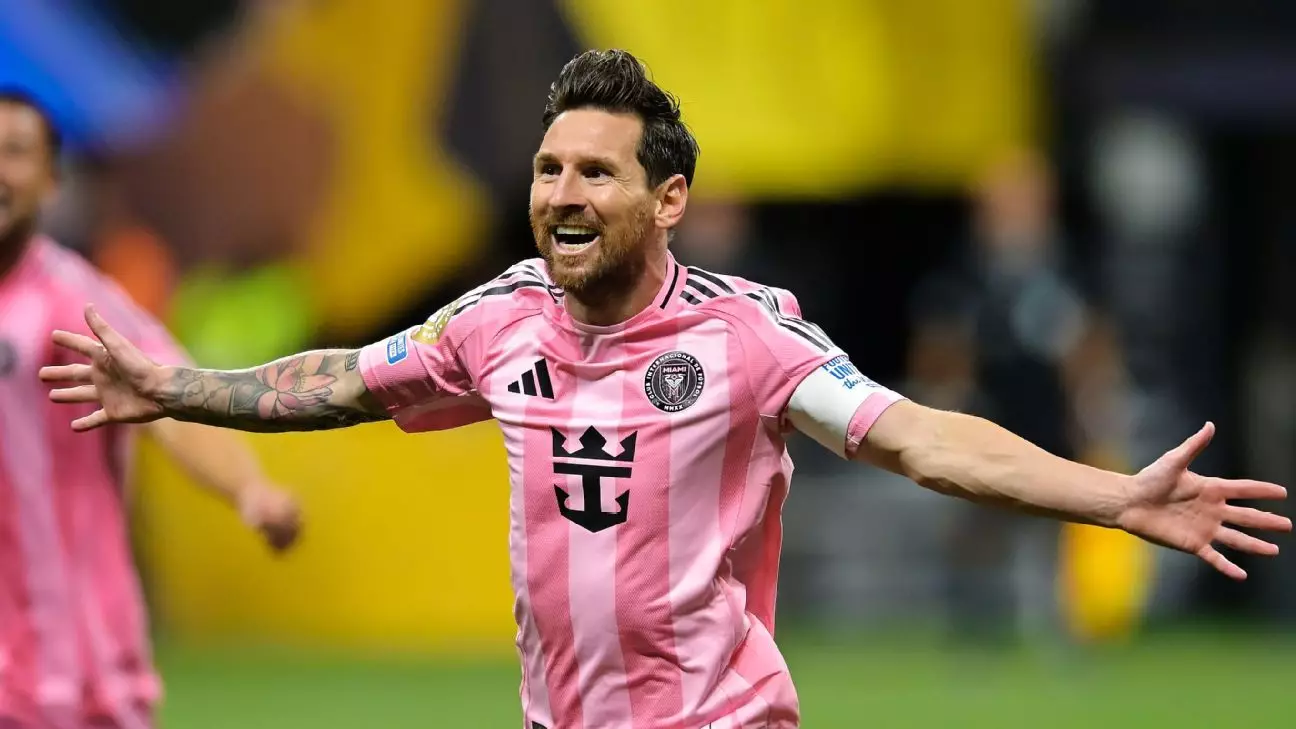Lionel Messi continues to shine as a beacon in Major League Soccer (MLS), securing the title of the league’s highest-paid player for the second consecutive year. With a staggering guaranteed compensation of $20.45 million, released by the MLS Players Association, Messi’s financial prowess is evident in an otherwise competitive landscape. Not only does this figure highlight his standing as a player, but it also underscores the broader implications for the league’s economic health and expansion. As the Argentinian icon dons the jersey of Inter Miami, his playing contract tells only part of the story; Messi is also benefiting from lucrative endorsement deals and partnerships, such as his agreement with Adidas and a unique revenue-sharing model with Apple, MLS’s broadcast partner.
The financial stakes are immense, with projections suggesting that Messi could earn up to $150 million over the life of his two-and-a-half-year contract. This figure positions him not simply as a talented player, but as a transformative figure within the league. Messi’s move to the U.S. has not only altered the competitive balance in MLS but has also lifted the profiles of teams and players around him. His influence transcends mere statistics or performance metrics; it’s a seismic shift in how we perceive soccer in America.
The Rising Tide of Player Salaries
Messi’s teammates and rivals, such as Lorenzo Insigne of Toronto FC and Sergio Busquets from Inter Miami, further exemplify the financial evolution occurring in the league. Insigne’s guaranteed compensation of $15.44 million places him in a respectable second position, revealing how Messi’s arrival has caused a ripple effect, elevating the finances of other top players. The growth from the previous year, where Insigne held the crown of highest earner, illustrates a fascinating dynamic. It is clear that Messi’s presence is elevating not just his own financial standing but also those around him. The financial ecosystem of MLS is being revitalized, showing clearly that investing in star talent pays dividends.
As data reveals, the average guaranteed salary for players in the league has increased to $649,199, a notable rise from $594,390 just a year prior. This 9.22% increase is indicative of a more competitive environment where quality talent commands significant financial reward—a trend that mirrors Messi’s own career. MLS’s median salary increase to $339,876 emphasizes this competitive landscape, showing that more players are now breaking the $1 million mark in guaranteed compensation, increasing from 115 players to 131 in just a year.
Inter Miami’s Financial Dominance
One cannot overlook the staggering financial clout of Inter Miami, where total guaranteed compensation has skyrocketed to $46.84 million, smashing their own league record set the previous year. This figure is more than double that of all but two other teams in the league. The sheer economic power of Messi’s team is a point of pride for the franchise and highlights the growing disparities within MLS. For instance, Toronto FC, in second place, spends significantly less at $34.15 million. The competition among franchises for star talent is intensifying, with Miami leading the charge. Other teams, like Atlanta United and LA Galaxy, follow suit; however, none can quite match the financial prowess of Messi’s squad.
This disparity brings to the forefront an essential question: How should the league address the balance between big-market teams like Inter Miami and others? The disproportionate spending raises concerns about competitive integrity, but it also indicates a thrilling evolution in perception as the league gains international prestige.
The Road Ahead: Socioeconomic Dynamics in MLS
This evolving financial landscape in MLS is poignant, particularly in light of the ongoing Collective Bargaining Agreement (CBA), in effect until the end of the 2027 season. Both the league and the MLS Players Association are navigating a pivotal moment, as salaries continue to climb, yet questions about equity and competitiveness linger. The investment in marquee players like Messi accelerates the league’s ability to attract viewership, sponsorships, and ultimately, revenue.
As MLS moves forward, the impact of financial disparities will be significant. Addressing the economic gaps between teams may require innovative strategies to foster competitive balance while harnessing the excitement and intrigue that high-profile players bring. Messi’s journey in MLS not only challenges pre-existing norms but also inspires a new generation of talent to enter this dynamic market, enhancing soccer’s identity and commercial viability within the United States.


Leave a Reply